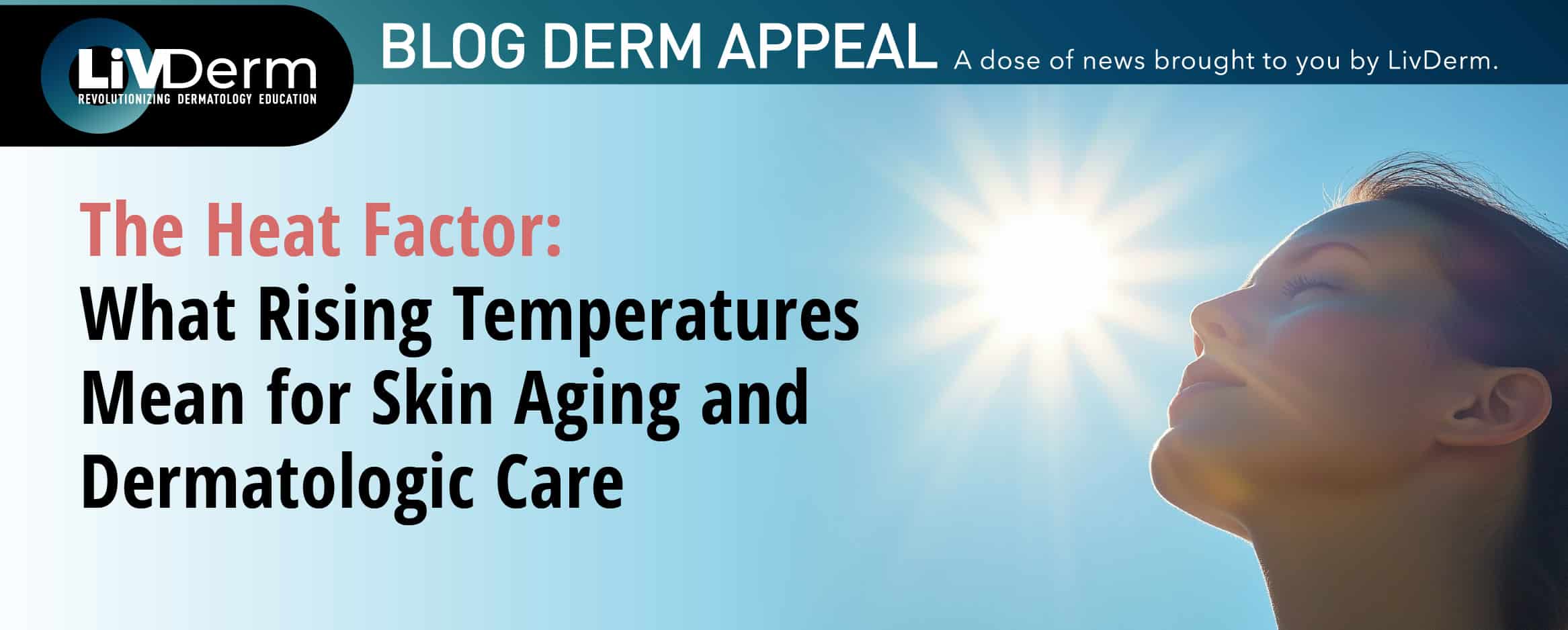As climate change intensifies, a growing body of research suggests that rising temperatures may do more than cause discomfort—they may actively accelerate the body’s biological aging. New data indicate that chronic heat exposure not only impacts overall longevity but could have direct consequences for skin health, dermatologic disease, and age-related changes in skin function. For dermatology professionals, this emerging risk demands renewed focus on environmental exposures as part of precision skin care and aging interventions.
Climate and the Clock: Heat as a Driver of Epigenetic and Skin Aging
A large 2025 study published in Science Advances analyzed data from over 3,600 U.S. adults aged 56 and older. Using three validated epigenetic clocks (PCPhenoAge, PCGrimAge, and DunedinPACE), researchers found that individuals living in regions with more days above a 90°F heat index experienced up to 14 months of additional biological aging over a six-year period. Crucially, this effect remained significant even after controlling for socioeconomic status and lifestyle factors, identifying heat exposure itself as an independent contributor to age acceleration.
These findings support a growing body of literature linking thermal stress with cellular and molecular aging. Heat can influence DNA methylation, oxidative stress, and inflammation—all of which are hallmarks of both systemic aging and cutaneous aging. For dermatology, this reinforces long-standing concerns about how environmental insults, including heat, UV radiation, and pollution, contribute to skin barrier degradation, collagen breakdown, and inflammatory skin conditions.
Environmental Stressors and the Skin: Implications for Clinical Dermatology
While dermatologists are highly attuned to the role of UV exposure in extrinsic aging, chronic heat is a less visible factor. Prolonged heat exposure can impair skin barrier function, increase transepidermal water loss (TEWL), and trigger flares in inflammatory skin diseases such as eczema, rosacea, and psoriasis. In older adults, heat stress is particularly concerning, as thermoregulation diminishes with age, and aging skin becomes more vulnerable to environmental damage.
These risks are compounded for patients in urban heat islands, low-income communities with poor access to cooling, or regions frequently affected by heatwaves. Certain medications common in dermatologic care, such as antihistamines, anticholinergics, or systemic retinoids, may also impair thermoregulation, raising the risk of adverse outcomes in high-heat environments.
For clinicians, this adds a new layer of complexity when treating patients with chronic dermatologic conditions or counseling individuals interested in skin longevity. A patient’s geographic location, home cooling access, and seasonal heat exposure should be considered in both acute and long-term care planning.
Integrating Climate-Aware Dermatology into Practice
As climate instability becomes a defining force in public health, dermatology is uniquely positioned to lead in environmental health counseling. A proactive approach might include:
- Educating patients on how heat exposure contributes to inflammatory skin responses and premature aging
- Encouraging hydration, use of physical sunscreens, and temperature-adaptive skincare during peak heat periods
- Incorporating biologically relevant age metrics (e.g., skin elasticity, pigmentation, TEWL) to monitor long-term environmental impact
- Advocating for greater access to heat-mitigation resources, particularly for patients with chronic skin disease in vulnerable communities
Incorporating climate-aware protocols into dermatologic care may also mean working closely with aging-focused specialists to track epigenetic changes and use dermatologic markers as early indicators of systemic stress.
A New Frontier in Precision Dermatology
The connection between rising heat and biological aging reframes climate change as more than an environmental crisis, it’s a dermatologic one. As we better understand the molecular interplay between heat stress and aging pathways, dermatology must evolve to include environmental assessments as part of comprehensive care.
This isn’t just about comfort, it’s about protecting cellular and skin integrity, reducing inflammation, and extending skin healthspan. Dermatologists are on the front lines of this transition and have a powerful role to play in mitigating the effects of a warming world on one of the body’s most exposed and vulnerable organs: the skin.
Sources:

















